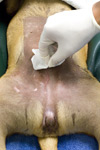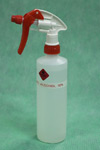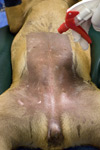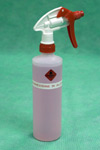The Patient
Unit 5: Preparation for Surgery
Topic 2: Skin Preparation
The patients skin cannot be sterilized, but the number of bacteria can be minimised. The transient bacteria on the skin can be eliminated with antiseptics, but the resident flora within the hair follicles and sebaceous glands cannot be destroyed completely.
Surgical scrub solutions are formulated with antiseptic and detergents as a Pre-wash to clean the skin. The detergent antiseptic must be removed before a non-detergent antiseptic solution in combination with 70% Alcohol is then applied as a spray or paint to provide residual bactericidal activity.
The Ideal Antiseptic should have the following properties :
- wide spectrum of antimicrobial activity
- rapid onset of action
- long residual effect
- activity in the presence of organic matter
- non-irritating effect to the skin
- economical cost
- TGA approved
A number of antiseptics are available, but the best and most commonly used solutions are those based on Chlorhexidine and Povidone-Iodine. Some studies suggest that Chlorhexidine is more effective. Chlorhexidine has a long residual action, whilst Povidone-Iodine does not.
Chlorhexidine
Chlorhexidine is a broad-spectrum bactericidal agent that is also effective against many fungi but has minimal activity against some viruses and bacterial spores. It is less effective against some strains of Pseudomonas spp.
It acts by altering bacterial cell wall permeability and precipitation of intracellular contents. It has a rapid onset of action and demonstrates a bacterial kill rate of 99 per cent after 30 seconds of application.
It binds to keratin and therefore has good residual activity for up to six hours.
Chlorhexidine is active in the presence of organic matter.
The incidence of skin reactions to chlorhexidine is low, but does occur from time-to-time. It is also ototoxic and a corneal irritant.
Concentrated stock solution without detergent contains 2% to 5% chlorhexidine gluconate or diacetate depending on the manufacturer.
For skin antisepsis a 0.5% Chlorhexdine in combination with 70% Alcohol is recommended.
For open wounds an aqueous 0.05% Chlorhexidine solution using sterile water is recommended.
Dilution with lactated Ringer’s solution results in a precipitate on standing but does not decrease the efficacy of chlorhexidine.
Povidone Iodine
A scrub form of povidone-iodine is also available which contains a detergent.
The use of iodine as an antiseptic replaced the use of phenol, introduced by Lister to reduce surgical infections, in the early 20th century. It was used as a 2.5% tincture (potassium iodine, iodine, water and alcohol) but had a propensity to stain tissues.
Povidone (polyvinylpyrrolidone)-iodine (Betadine™) is an iodophor with a broad-spectrum bactericidal agent that is also effective against a large number of fungi, viruses and protozoa.
It is sporicidal with prolonged contact. This complex of iodine allows slow, continuous release of iodine, which binds to bacterial cell walls and causes cell death.
It is inactivated in the presence of organic material, especially blood, and has poor residual activity.
Povidone-iodine has been reported to be inactivated by alcohol.
A relatively high incidence of skin reaction has been reported with the use of iodine-based antiseptics.
In high concentrations of povidone-iodine, the iodine is more tightly bound to polyvinylpyrrolidone resulting in lower bactericidal activity.
It is recommended to be used as a 0.1% to 1% solution. Stock solutions contain 10% povidone-iodine.

As with all chemicals there may be sensitivity of either the operator or patient to some of the chemicals used in preparing the patient and surgeon for surgery. If sensitivity is suspected an alternative chemical or avoidance of the chemical by some means including the wearing of gloves and masks (PPE – personal protective equipment) is advised.

Download S.O.P on preparation of patient (176Kb)
The initial wash is performed either with Savlon or 4% Chlorhexidine diluted with water.
Chlorhexidine (CHG) contains a small percentage of alcohol to prevent growth of Gram negative organisms in the solution.
It is applied with non-woven swabs or cotton wool. Both the detergents lather and the scrubbing action are important for the mechanical removal of debris and bacteria.
Excessive vigour and scrubbing brushes should be avoided as it will bring bacteria within follicles to the surface and may cause trauma to the skin or bring contamination to the skin surface.
Checking the swab for debris after each scrub will help determine when the surgical site has been sufficiently cleaned. The swab must be visually clean before moving onto the next step.
Once the initial scrub is complete (when the skin is visually clean), a 70% alcohol antiseptic should be sprayed on the prepared site to defat the skin, give an immediate bacterial kill and clean away all of the excess scrub solution and lather.
Ethyl alcohol needs to be diluted in water into a 70% w/v solution to promote antimicrobial activity.
A sterile swab, sprayed with 70% Alcohol is then used to wipe from the presumed incision site, working outwards to the periphery (dirty area). Without tracking back over the clean area.
A final application of a mixture of 70% ethyl alcohol and 0.5% chlorhexidine or 1% povidone-iodine, with no added detergent, is then sprayed onto the prepared area and not wiped off, to provide a residual depressant effect against the resident flora.
The patient is then transferred to the theatre and a further application of the final solution is made.
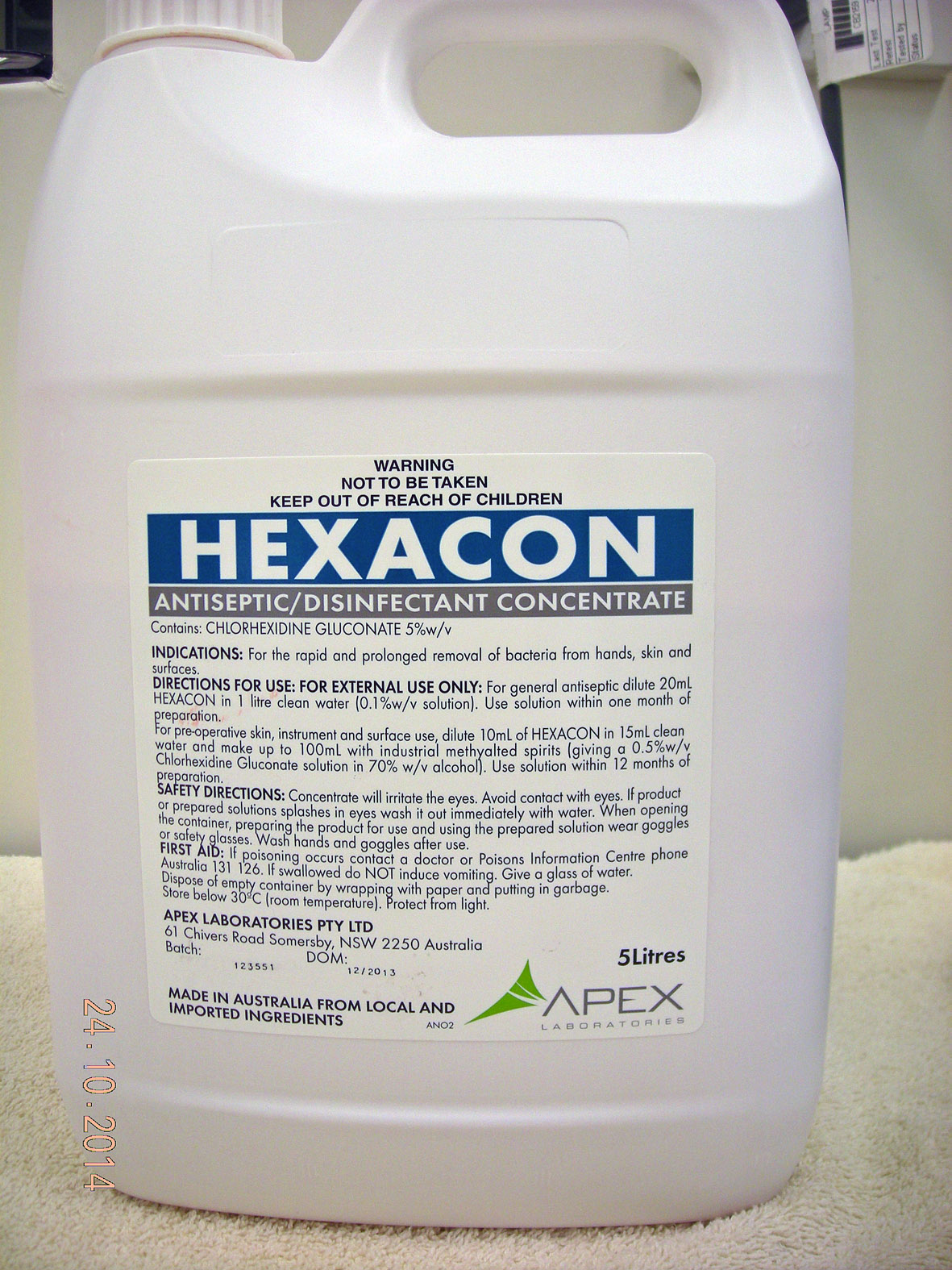
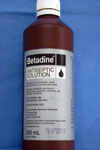
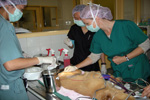
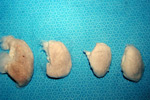 Dirt on cotton wool at the Pre-Wash stage
Dirt on cotton wool at the Pre-Wash stage